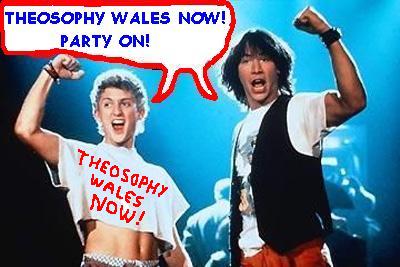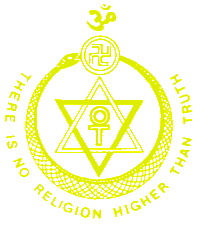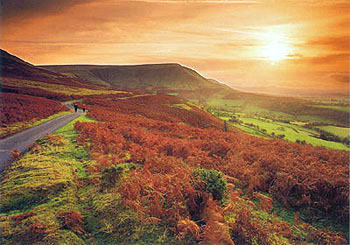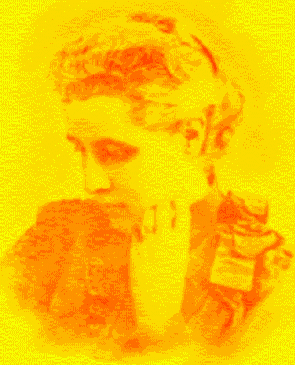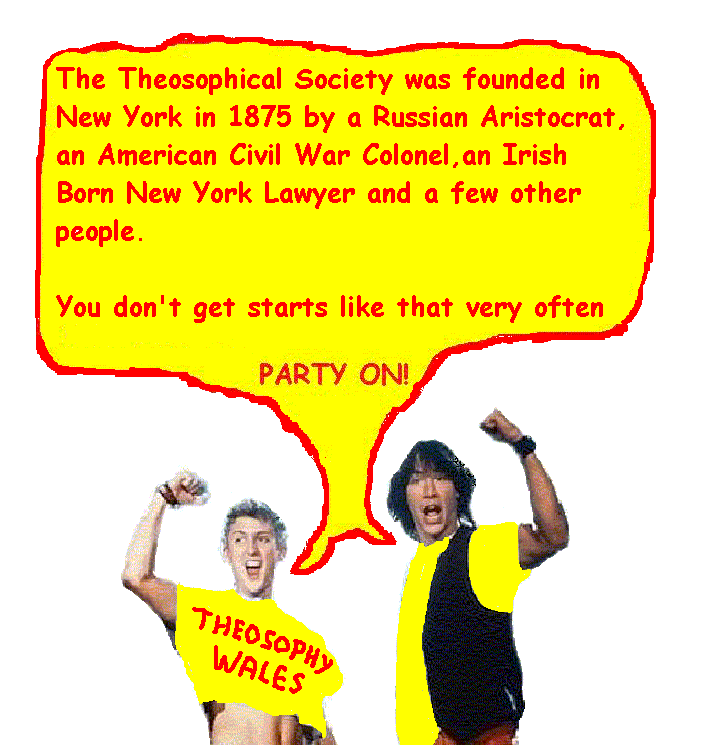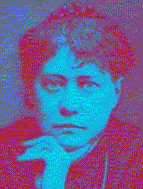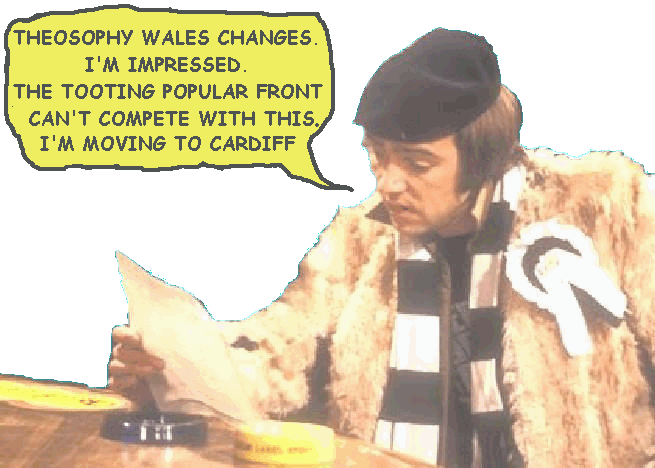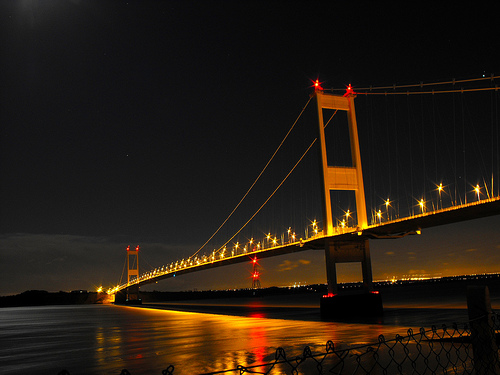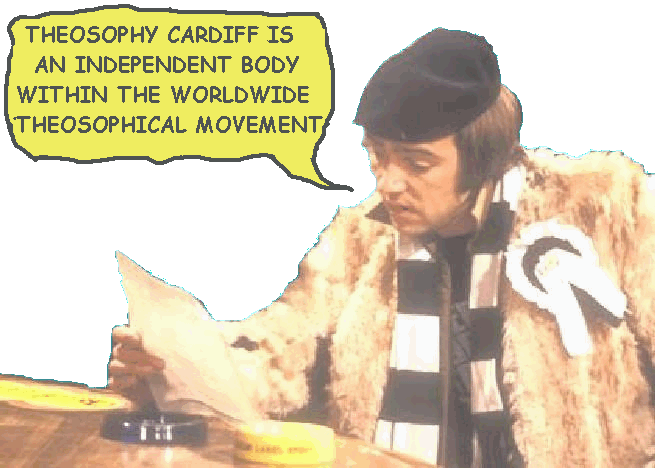NOW!
THE
THEOSOPHY WALES WEBSITE
THAT
JUST WON’T WAIT
Bangor, Cardiff,
Conwy & Swansea
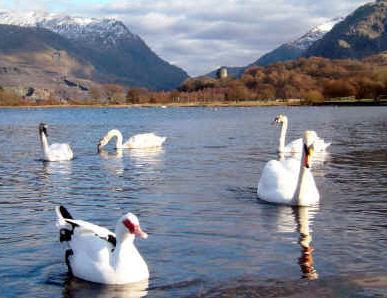
Swans
at Llyn Padarn,
Snowdonia,
Theosophy Wales has no controlling
body
and is made up of
independent groups
Sunset
over Gospel Pass in the black Mountains
in
South East Wales near the border with Herefordshire, England.
_________________
The
Seven Principles of Man
By
Annie
Besant
Principle V.
Manas, The Thinker, or Mind
We have
reached the most complicated part of our study, and some thought and attention
are necessary from the reader to gain even an elementary idea of the relation
held by the fifth principle to the other principles in man.
The word
Manas comes from the Sanskrit word – man, the root of the verb to think ; it is
the Thinker in us, spoken of vaguely in the West as mind. I will ask the reader
to regard Manas as Thinker rather than as mind, because the word Thinker
suggests some one who thinks, i.e., an individual, an entity. And this is
exactly the
Theosophical idea of Manas, for Manas is the immortal individual, the real
" I ," that clothes itself over and over again in transient
personalities, and itself endures for ever.
It is
described in the Voice of the Silence in the exhortation addressed to the
candidate for initiation: "Have perseverance as one who doth for evermore
endure. Thy shadows [personalities] live and vanish ; that which in thee shall
live for ever, that which in thee knows, for it is knowledge, is not of
fleeting life; it is the man that was, that is, and will be, for whom the hour
shall never strike" (p. 31). H.P.Blavatsky has described it very clearly
in the Key to Theosophy: "Try to imagine a ‘Spirit,’ a celestial being,
whether we call it by one name or another, divine in its essential nature, yet
not pure enough to be one with the ALL, and having, in order to achieve this,
to so purify its nature as finally to gain that goal.
It can do so
only be passing individually and personally, i.e., spiritually and physically,
through every experience and feeling that exists in the manifold or
differentiated universe. It has, therefore, after having gained such experience
in the lower kingdoms, and having ascended higher and still higher with every
rung on the ladder of being, to pass through every experience on the human
planes.
In its very
essence it is Thought, and is, therefore, called in its plurality Manasaputra,
‘the Sons of (universal) Mind.’ This individualised ‘Thought’ is what we
Theosophists call the real human Ego, the thinking entity imprisoned in a case
of flesh and bones. This is surely a spiritual entity, not matter (that is, not
matter as we know it, on the plane of the objective universe) – and such
entities are the incarnating Egos that inform the bundle of animal matter
called mankind, and whose names are Manasa or minds" (Key to Theosophy, p.
183-184).
This idea may
be rendered yet clearer perhaps by a hurried glance cast backward over man’s evolution
in the past. When the quaternary had been slowly built up, it was a fair house
without a tenant, and stood empty awaiting the coming of the one who was to
dwell therein.
The name
Mânasaputra (the sons of mind) covers many grades of intelligence, ranging from
the mighty "Sons of the Flame" whose human evolution lies far behind
them, down to those entities who gained individualisation in the cycle
preceding our own, and were ready to incarnate on this earth in order to
accomplish their human stage of evolution.
Some
superhuman intelligences incarnated as guides and teachers of our infant
humanity, and became founders and divine rulers of the ancient civilisations.
Large numbers
of the entities spoken of above, who had already evolved some mental faculties,
took up their abode in the human quaternary, in the mindless men. These are the
reincarnating Mânasaputra, who became the tenants of the human frames as then
evolved on earth, and these same Mânasaputra, reincarnating age after age, are
the Reincarnating Egos, the Manas in us, the persistent individual, the fifth
principle in man.
The remainder
of mankind through successive ages received from the loftier Mânasaputra their
first spark of mind, a ray which stimulated into growth the germ of mind latent
within them, the human soul thus having its birth in time there. It is these
differences of age, as we may call them, in the beginning of the individual
life, of the specialisation of the eternal Divine Spirit into a human soul,
which explain the enormous differences in mental capacity found in our present
humanity.
The
multiplicity of names given to this fifth principle has probably tended to
increase the confusion surrounding it in the minds of many who are beginning to
study Theosophy.
Mânasaputra
is what we call the historical name, the name that suggests the entrance into
humanity of a class of already individualised souls at a certain point of
evolution ; Manas is the ordinary name, descriptive of the intellectual nature
of the principle ; the Individual or the " I ," or Ego, recalls the
fact that this principle is permanent, does not die, is the individualising
principle, separating itself in thought from all that is not itself, the
Subject in Western terminology as opposed to the Object ; the Higher Ego puts
it into contrast with the Personal Ego, of which something is to be presently
said.
The
Reincarnating Ego lays stress on the fact that it is the principle that
reincarnates continually, and so unites in its own experience all the lives
passed through on earth. There are various other names, but they will not be
met with in elementary treatises.
The above are
those most often encountered, and there is no real difficulty about them, but
when they are used interchangeably, without explanation, the unhappy student is
apt to tear his hair in anguish, wondering how many principles he has got hold
of, and what relation they bear to each other.
We must now
consider Manas during a single incarnation, which will serve as the type of
all, and we will start when the Ego has been drawn – by causes set a-going in
previous earth-lives – the family in which is to be born the human being who is
to serve as its next tabernacle. (I do not deal here with reincarnation, since
that great and most essential doctrine of Theosophy must be expounded
separately).
The Thinker,
then, awaits the building of the "house of life" which he is to
occupy ; and now arises a difficulty ; himself a spiritual entity living on the
mental or third plane upwards, a plane far higher than that of the universe, he
cannot influence the molecules of gross matter of which his dwelling is built
by the direct play upon them of his own most subtle particles.
So, he
projects part of his own substance, which clothes itself with astral matter,
and then with the help of etheric matter permeates the whole nervous system of
the yet unborn child, to form, as the physical apparatus matures, the thinking
principle in man. This projection from Manas, spoken of as its reflection, its
shadow, its ray, and by many another descriptive and allegorical name, is the
lower Manas, in contradistinction to the higher Manas – Manas, during every
period of incarnation, being dual.
On this,
H.P.Blavatsky says: "Once imprisoned, or incarnate, their (the Manas)
essence becomes dual; that is to say the rays of the eternal divine Mind,
considered as individual entities, assume a twofold attribute which is
(a) their
essential, inherent, characteristic, heaven-aspiring mind (higher Manas), and
(b) the human
quality of thinking, or animal cogitation, rationalised owing to the
superiority of the human brain, the Kâma-tending or lower Manas" (Key to
Theosophy, p. 184).
We must now
turn our attention to this lower Manas alone, and see the part which it plays
in the human constitution.
It is
engulfed in the quaternary, and we may regard it as clasping Kâma with one
hand, while with the other it retains its hold on its father, the higher Manas.
Whether it
will be dragged down by Kâma altogether and be torn away from the triad to
which by its nature it belongs, or whether it will triumphantly carry back to
its source the purified experiences of its earth-life – that is the
life-problem set and solved in each successive incarnation.
During
earth-life, Kâma and the lower Manas are joined together, and are often spoken
of conveniently as Kâma-Manas. Kâma supplies, as we have seen, the animal and
passional elements ; the lower Manas rationalises these, and adds the
intellectual faculties ; and so we have the brain-mind, the brain-intelligence,
i.e.., Kâma-Manas functioning in the brain and nervous system, using the
physical apparatus as its organ on the material plane.
In man these
two principles are interwoven during life, and rarely act separately, but the
student must realise that "Kâma-Manas " is not a new principle, but
the interweaving of the fourth with the lower part of the fifth.
As with a
flame we may light a wick, and the colour of the flame of the burning wick will
depend on the nature of the wick and of the liquid in which it is soaked, so in
each human being the flame of Manas set alight the brain and Kâmic wick, and
the colour of the light from that wick will depend on the Kâmic nature and the
development of the brain-apparatus.
If the Kâmic
nature be strong and undisciplined it will soil the pure manasic light, lending
it a lurid tinge and fouling it with noisome smoke. If the brain-apparatus be
imperfect or undeveloped, it will dull the light and prevent it from shining
forth to the outer world.
As was
clearly stated by H.P.Blavatsky in her article on "Genius" ;
"What we call ‘the manifestations of genius’ in a person are only the more
or less successful efforts of that Ego to assert itself on the outward plane of
its objective form – the man of clay – in the matter-of-fact daily life of the
latter.
The Egos of a
Newton, an Æschylus, or a Shakespeare are of the same essence and substance as
the Egos of a yokel, an ignoramus, a fool, or even an idiot ; and the
self-assertion of their informing genii depends on the physiological and
material
construction of the physical man. No Ego differs from another Ego in its
primordial or original essence and nature.
That which
makes one mortal a great man and of another a vulgar silly person is, as said, the
quality and make-up of the physical shell or casing, and the adequacy or
inadequacy of brain and body to transmit and give expression to the light of
the real inner man ; and this aptness or inaptness is, in its turn, the result
of Karma.
Or, to use another
simile, physical man is the musical instrument, and the Ego the performing
artist. The potentiality of perfect melody of sound is in the former – the
instrument – and no skill of the latter can awaken a faultless harmony out of a
broken or badly made instrument.
This harmony
depends on the fidelity of transmission, by word and act, to the objective
plane, of the unspoken divine thought in the very depths of man’s subjective or
inner nature. Physical man may – to follow our simile – be a priceless Stradivarius,
or a cheap and cracked fiddle, or again a mediocrity between the two, in the
hands of the Paganini who ensouls him" (Lucifer November, 1889, p.228).
Bearing in
mind these limitations and idiosyncrasies ([Limitations and idiosyncrasies due
to the action of the Ego in previous earth-lives, be it remembered ] imposed on
the manifestations of the thinking principle by the organ through which it has
to function, we shall have little difficulty in following the workings of the
lower Manas in man ; mental ability, intellectual strength, acuteness, subtlety
– all these are its manifestations ; these may reach as far as what is often
called genius, what H.P. Blavatsky speaks of as "artificial genius, the
outcome of culture and of purely intellectual acuteness." Its nature is
often demonstrated by the presence of Kâmic elements in it, of passion, vanity
and arrogance.
The higher
Manas can but rarely manifest itself at the present stage of human evolution. Occasionally
a flash from those loftier regions lightens the twilight in which we dwell, and
such flashes alone are what the Theosophist calls true genius ; "Behold in
every manifestation of genius, when combined with virtue, the undeniable
presence of the celestial exile, the divine Ego whose jailer thou art, O man of
matter."
For theosophy
teaches "that the presence in man of various creative powers" –
called genius in their collectivity – is due to no blind chance, to no innate
qualities through hereditary tendencies – though that which is known as atavism
may often intensify these faculties – but to an accumulation of individual
antecedent experiences of the Ego in its preceding life and lives.
For,
omniscient in its essence and nature, it still requires experience, through its
personalities, of the things of earth, earthly on the objective plane, in order
to apply the fruition of that abstract experience to them. And, adds our
philosophy, the cultivation of certain aptitudes through out a long series of
past incarnations must finally culminate, in some one life, in a blooming forth
as genius, in one or another direction" – ( Lucifer November, 1889, p.
229-30). For the manifestation of true genius, purity of life is an essential
condition.
Kâma-Manas is
the personal self of man ; we have already seen that the quaternary, as a
whole, is the personality, "the shadow," and the lower Manas gives
the individualising touch that makes the personality recognise itself as "
I ". It becomes intellectual, it recognises itself as separate from all
other selves ; deluded by the separateness it feels, it does not realise a
unity beyond all that it is able to sense.
And the lower
Manas, attracted by the vividness of the material-life impressions, swayed by
the rush of the Kâmic emotions, passions and desires, attracted to all material
things blinded and deafened by the storm voices among which it is plunged – the
lower Manas is apt to forget the pure and serene glory of its birthplace, and
to throw itself into the turbulence which gives rapture in lieu of peace.
And, be it
remembered, it is this very lower Manas that yields the last touch of delight
to the senses and to the animal nature ; for what is passion that can neither
anticipate nor remember, where is ecstasy without the subtle force of
imagination, the delicate colours of fancy and of dream?
But there may
be chains yet more strong and constraining, binding the lower Manas fast to the
earth. They are forged of ambition, of desire for fame, be it for that of the
statesman’s power, or of supreme intellectual achievement. So long as any work
is wrought for sake of love, or praise, or even recognition that the work is
"mine" and not another’s ; so long as in the heart’s remotest
chambers one subtlest yearning remains to be recognised as separate from all ;
so long, however grand the ambition, however far reaching the charity, however
lofty the achievement, Manas is tainted with Kâma, and is not pure as its
source.
____________________________
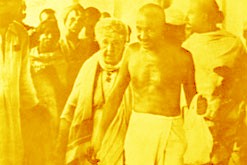
Annie
Besant with Mahatma Gandhi
___________________________
_____________________________
Find out more about
with these links
Cardiff Theosophical Society meetings are informal
and there’s always a cup of tea afterwards
The Cardiff Theosophical Society Website
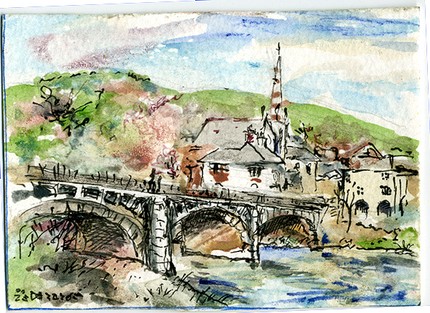
Newtown, Powys, Mid
The National Wales Theosophy Website
Bangor, Cardiff, Conwy & Swansea

The
Hayes
Cardiff
City Centre
If you
run a Theosophy Group, please feel free
to use
any of the material on this site
The Most Basic Theosophy
Website in the Universe
A quick overview of Theosophy
and the Theosophical Society
If you run a Theosophy Group you
can use this as an introductory handout.
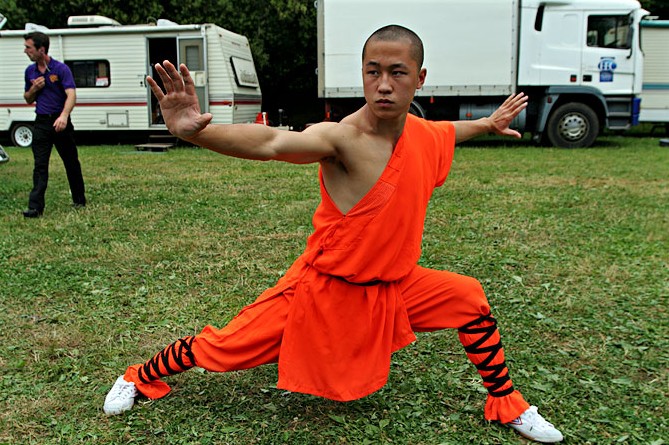
Shaolin Student
Pontcanna Fields,
Theosophy Cardiff’s Instant Guide
Theosophical
Movement in Wales
as it separates
into independent
groups that run
do their own show
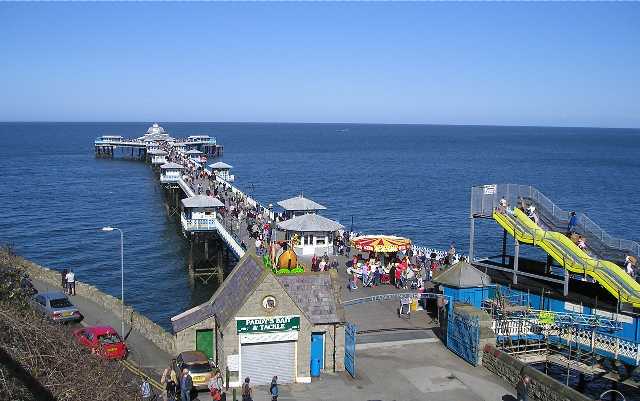
Llandudno Pier
One liners and quick explanations
H P Blavatsky is
usually the only
Theosophist that
most people have ever
heard of. Let’s put
that right

Beddgelert,
Snowdonia,
The Voice of the Silence Website
An Independent Theosophical Republic
Links to Free Online Theosophy
Study Resources; Courses,
Writings,
The main criteria
for the inclusion of
links on this
site is that they have some
relationship
(however tenuous) to Theosophy
and are
lightweight, amusing or entertaining.
Topics include
Quantum Theory and Socks,
Dick Dastardly and Legendary Blues Singers.
A selection of
articles on Reincarnation
Provided in
response to the large
number of
enquiries we receive at
Cardiff
Theosophical Society on this subject

Punch & Judy Show, Llandudno.
The same family has run this show since 1860
The Voice of the Silence Website

Rhayader
Mid

Cader
Idris, Mid Wales.
A
Winter View
This is for
everyone, you don’t have to live
in Wales to
make good use of this Website
The Old Severn Bridge at night
If you are travelling to Wales along the M4, you
can cross on the
Old Severn Bridge (opened 1966) by taking the M48,
which will take
you over the bridge and back on to the M4. You can
also cross this
bridge on foot, horse or bike by using the service
roads on
either side. Don’t try this on the new Severn
Bridge
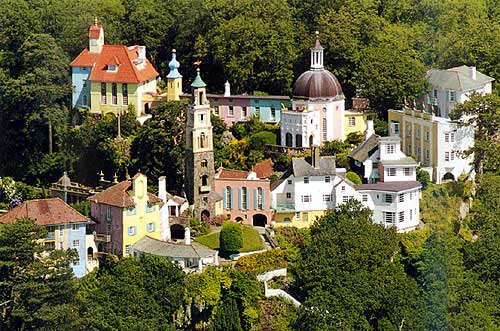
Port Meirion,
Setting of the cult 1960s TV series,
The Prisoner
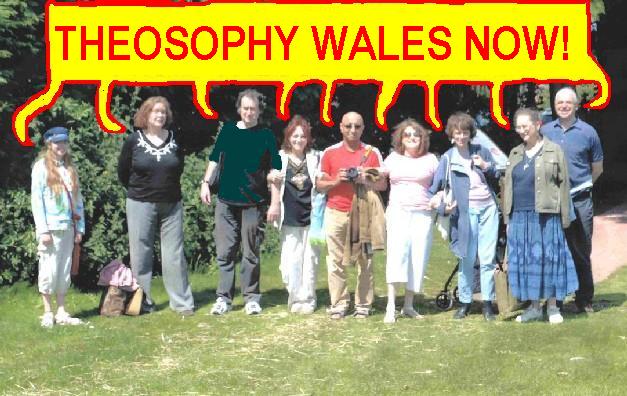
Cardiff Theosophists on an outing to
Caerleon in Gwent,
South Wales.
No
Aardvarks were harmed in the
Within the
British Isles, The Adyar Theosophical Society has Groups in;
Bangor*Basingstoke*Billericay*Birmingham*Blackburn*Bolton*Bournemouth
Bradford*Bristol*Camberley*Cardiff*Chester*Conwy*Coventry*Dundee*Edinburgh
Folkstone*Glasgow*Grimsby*Inverness*Isle
of Man*Lancaster*Leeds*Leicester
Letchworth*London*Manchester*Merseyside*Middlesborough*Newcastle
upon Tyne
North
Devon*Northampton*Northern Ireland*Norwich*Nottingham
Perth*Republic of
Ireland*Sidmouth*Southport*Sussex*Swansea*Torbay
Tunbridge
Wells*Wallasey*Warrington*Wembley*Winchester*Worthing
The Spiritual Home of Urban Theosophy
The Earth Base for Evolutionary Theosophy
A B C D EFG H IJ KL M N OP QR S T UV WXYZ
Complete Theosophical Glossary in Plain Text Format
1.22MB
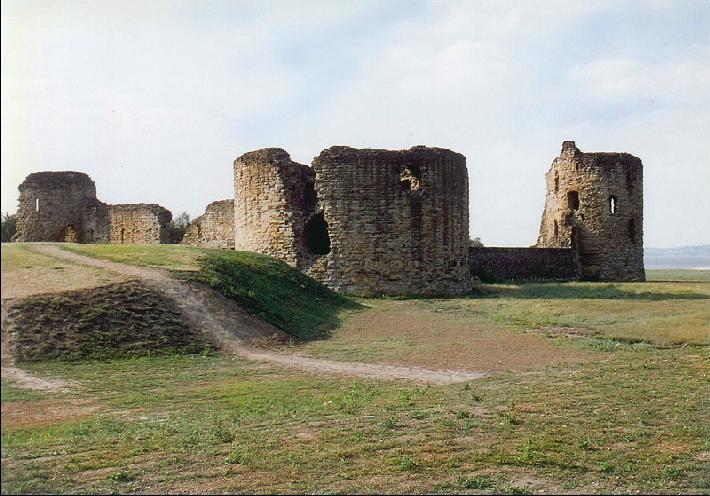
Flint
Castle, North Wales.
______________________
Quick Explanations
with Links to More Detailed Info
What is Theosophy ? Theosophy Defined (More Detail)
Three Fundamental Propositions Key Concepts of Theosophy
Cosmogenesis
Anthropogenesis
Root Races
Karma
Ascended Masters After Death States Reincarnation
The Seven Principles of Man Helena Petrovna Blavatsky
Colonel Henry Steel Olcott William Quan Judge
The Start of the Theosophical Society
History of the Theosophical Society
Theosophical Society Presidents
History of the Theosophical Society in Wales
The Three Objectives of the Theosophical Society
Explanation of the Theosophical Society Emblem
Glossaries of Theosophical Terms

The
Tabernacle, Efail Isaf,
Mid-Glamorganshire,
______________________
An Outstanding
Introduction to Theosophy
By a student of
Katherine Tingley
Elementary Theosophy Who is the Man? Body and Soul
Body, Soul and Spirit Reincarnation Karma

Coleg Menai Performing Art students
as ‘human statues’ in Bangor High Street.
This
idea began in Covent Garden and spread
round
Britain.
_____________________
Tekels Park to be Sold to a Developer
Concerns are
raised about the fate of the wildlife as
The Spiritual
Retreat, Tekels Park in Camberley,
Surrey, England
is to be sold to a developer.
Tekels Park is a
50 acre woodland park, purchased
for the Adyar Theosophical Society in England
in 1929.
In addition to
concern about the park, many are
worried about the future of the Tekels Park
Deer
as they are not a
protected species.
____________________
What Theosophy Is From the Absolute to Man
The Formation of a Solar System The Evolution of Life
The Constitution of Man After Death Reincarnation
The Purpose of Life The Planetary Chains
The Result of Theosophical Study
An
Outline of Theosophy
Charles
Webster Leadbeater
Theosophy - What it is How is it Known? The Method of Observation
General Principles The Three Great Truths The Deity
Advantage Gained from this
Knowledge The Divine Scheme
The Constitution of Man The True Man Reincarnation
The Wider Outlook Death Man’s Past and Future
Cause and Effect What Theosophy does for us
The Unity Underlying all Religions
The Physical
Plane The Astral Plane
Kamaloka The Mental Plane Devachan
The Buddhic and
Nirvanic Planes Reincarnation Karma
The Three Kinds of Karma Collective Karma
The Law of
Sacrifice Man’s Ascent Building a
Cosmos
Wyndham Arcade,
Cardiff
Annotated Edition Published 1885
Preface to the Annotated Edition Preface to the Original Edition
Esoteric Teachers The Constitution of Man The Planetary Chain
The World Periods Devachan
Kama Loca
The Human Tide-Wave The Progress of Humanity
Buddha Nirvana The Universe
The Doctrine Reviewed
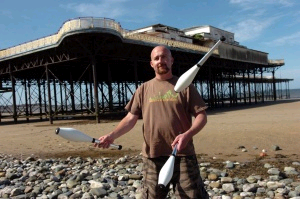
A
Juggler in action on Colwyn Bay beach
at
the 2009 Welsh Juggling convention
held
on the pier.
Helena Petrovna Blavatsky 1831 – 1891
The Founder of Modern Theosophy
Index of Articles by
By
H P Blavatsky
Is the Desire to Live Selfish?
Ancient Magic in Modern Science
Precepts Compiled by H P Blavatsky
Obras Por H P Blavatsky
En Espanol
Articles about the Life of H P Blavatsky
Try
these if you are looking for a local
Theosophy
Group or Centre
UK Listing of Theosophical Groups
Please tell us about your UK Theosophy Group
___________________
into categories and presented according to relevance of
website.
Web Directory - Add Link - Submit Article - Online Store - Forum

The
The
Menai Bridge links the Island of Anglesey
with
the North Wales coast
______________________
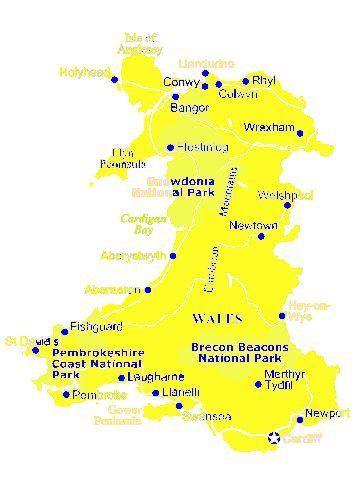
General pages
about Wales, Welsh History
and The History
of Theosophy in Wales
Wales is a
Principality within the United Kingdom and has an eastern
border with
England. The land area is just over 8,000 square miles.
Snowdon in North
Wales is the highest mountain at 3,650 feet.
The coastline is
almost 750 miles long. The population of Wales
as at the 2001 census is 2,946,200.
________________
Bangor Conwy
& Swansea Lodges are members
of the Welsh
Regional Association (Formed 1993).
Theosophy Cardiff
separated from the Welsh Regional
Association in
March 2008 and became an independent
body within the Theosophical Movement in March 2010
High
Drama & Worldwide Confusion
as Theosophy Cardiff Separates from the
Welsh Regional Association (formed 1993)
Theosophy Cardiff cancels its Affiliation
to the Adyar Based Theosophical Society
Nature is infinite in space and
time -- boundless and eternal, unfathomable and ineffable. The all-pervading
essence of infinite nature can be called space, consciousness, life, substance,
force, energy, divinity -- all of which are fundamentally one.
2) The finite and the infinite
Nature is a unity in
diversity, one in essence, manifold in form. The infinite whole is composed of
an infinite number of finite wholes -- the relatively stable and autonomous
things (natural systems or artefacts) that we observe around us. Every natural
system is not only a conscious, living, substantial entity, but is
consciousness-life-substance, of a particular range of density and form.
Infinite nature is an abstraction, not an entity; it therefore does not act or
change and has no attributes. The finite, concrete systems of which it is
composed, on the other hand, move and change, act and interact, and possess
attributes. They are composite, inhomogeneous, and ultimately transient.
3)
Vibration/worlds within worlds
The one essence manifests not
only in infinitely varied forms, and on infinitely varied scales, but also in
infinitely varying degrees of spirituality and substantiality, comprising an
infinite spectrum of vibration or density. There is therefore an endless series
of interpenetrating, interacting worlds within worlds, systems within systems.
The energy-substances of
higher planes or subplanes (a plane being a particular range of vibration) are
relatively more homogeneous and less differentiated than those of lower planes
or subplanes.
Just as boundless space is
comprised of endless finite units of space, so eternal duration is comprised of
endless finite units of time. Space is the infinite totality of worlds within
worlds, but appears predominantly empty because only a tiny fraction of the
energy-substances composing it are perceptible and tangible to an entity at any
particular moment. Time is a concept we use to quantify the rate at which
events occur; it is a function of
change and motion, and
presupposes a succession of cause and effect. Every entity is extended in space
and changes 'in time'.
All change (of position,
substance, or form) is the result of causes; there is no such thing as absolute
chance. Nothing can happen for no reason at all for nothing exists in
isolation; everything is part of an intricate web of causal interconnections and
interactions. The keynote of nature is harmony: every action is automatically
followed by an equal and opposite reaction, which sooner or later rebounds upon
the originator of the initial act. Thus, all our thoughts and deeds will
eventually bring us 'fortune' or 'misfortune' according to the degree to which
they were harmonious or disharmonious. In the long term, perfect justice
prevails in nature.
Because nature is
fundamentally one, and the same basic habits and structural, geometric, and
evolutionary principles apply throughout, there are correspondences between
microcosm and macrocosm. The principle of analogy -- as above, so below -- is a
vital tool in our efforts to understand reality.
All finite systems and their
attributes are relative. For any entity, energy-substances vibrating within the
same range of frequencies as its outer body are 'physical' matter, and finer
grades of substance are what we call energy, force, thought, desire, mind,
spirit, consciousness, but these are just as material to entities on the
corresponding planes as our physical world is to us. Distance and time units
are also relative: an atom is a solar system on its own scale, reembodying perhaps
millions of times in what for us is one second, and our whole galaxy may be a
molecule in some supercosmic entity, for which a million of our years is just a
second. The range of scale is infinite: matter-consciousness is both infinitely
divisible and infinitely aggregative.
All natural systems consist
of smaller systems and form part of larger systems. Hierarchies extend both
'horizontally' (on the same plane) and 'vertically' or inwardly (to higher and
lower planes). On the horizontal level, subatomic particles form atoms, which
combine into molecules, which arrange themselves into cells, which form tissues
and organs, which form part of organisms, which form part of ecosystems, which
form part of planets, solar systems, galaxies, etc. The constitution of worlds
and of the organisms that inhabit them form 'vertical' hierarchies, and can be
divided into several interpenetrating layers or elements, from physical-astral
to psychomental to spiritual-divine, each of which can be further divided.
The human constitution can be
divided up in several different ways: e.g. into a trinity of body, soul, and
spirit; or into 7 'principles' -- a lower quaternary consisting of physical
body, astral model-body, life-energy, and lower thoughts and desires, and an
upper triad consisting of higher mind (reincarnating ego), spiritual intuition,
and inner god. A planet or star can be regarded as a 'chain' of 12 globes, existing
on 7 planes, each globe comprising several subplanes.
The highest part of every
multilevelled organism or hierarchy is its spiritual summit or 'absolute',
meaning a collective entity or 'deity' which is relatively perfected in
relation to the hierarchy in question. But the most 'spiritual' pole of one
hierarchy is the most 'material' pole of the next, superior hierarchy, just as
the lowest pole of one hierarchy is the highest pole of the one below.
Each level of a hierarchical
system exercises a formative and organizing influence on the lower levels
(through the patterns and prototypes stored up from past cycles of activity),
while the lower levels in turn react upon the higher. A system is therefore
formed and organized mainly from within outwards, from the inner levels of its
constitution, which are relatively more enduring and developed than the outer
levels. This inner guidance is sometimes active and selfconscious, as in our
acts of free will (constrained, however, by karmic tendencies from the past),
and sometimes it is automatic and passive, giving rise to our own automatic
bodily functions and habitual and instinctual behavior, and to the orderly,
lawlike operations of nature in general. The 'laws' of nature are therefore the
habits of the various grades of conscious entities that compose reality,
ranging from higher intelligences (collectively
forming the universal mind) to elemental nature-forces.
10) Consciousness and its vehicles
The core of every entity --
whether atom, human, planet, or star -- is a monad, a unit of consciousness-life-substance,
which acts through a series of more material vehicles or bodies. The monad or
self in which the consciousness of a particular organism is focused is animated
by higher monads and expresses itself through a series of lesser monads, each
of which is the nucleus of one of the lower vehicles of the entity in question.
The following monads can be distinguished: the divine or galactic monad, the
spiritual or solar monad, the higher human or planetary-chain monad, the lower
human or globe monad, and the animal, vital-astral, and physical monads. At our
present stage of evolution, we are essentially the lower human monad, and our
task is to raise our consciousness from the animal-human to the spiritual-human
level of it.
Evolution means the
unfolding, the bringing into active manifestation, of latent powers and
faculties 'involved' in a previous cycle of evolution. It is the building of
ever fitter vehicles for the expression of the mental and spiritual powers of
the monad. The more sophisticated the lower vehicles of an entity, the greater
their ability to express the powers locked up in the higher levels of its
constitution. Thus all things are alive and conscious, but the degree of
manifest life and consciousness is extremely varied.
Evolution results from the
interplay of inner impulses and environmental stimuli. Ever building on and
modifying the patterns of the past, nature is infinitely creative.
12) Cyclic evolution/re-embodiment
Cyclic evolution is a
fundamental habit of nature. A period of evolutionary activity is followed by a
period of rest. All natural systems evolve through re-embodiment. Entities are
born from a seed or nucleus remaining from the previous evolutionary cycle of
the monad, develop to maturity, grow old, and pass away, only to re-embody in a
new form after a period of rest. Each new embodiment is the product of past
karma and present choices.
Nothing comes from nothing:
matter and energy can be neither created nor destroyed, but only transformed.
Everything evolves from preexisting material. The growth of the body of an
organism is initiated on inner planes, and involves the transformation of higher
energy-substances into lower, more material ones, together with the attraction
of matter from the environment.
When an organism has
exhausted the store of vital energy with which it is born, the coordinating
force of the indwelling monad is withdrawn, and the organism 'dies', i.e. falls
apart as a unit, and its constituent components go their separate ways. The
lower vehicles decompose on their respective subplanes, while, in the case of
humans, the reincarnating ego enters a dreamlike state of rest and assimilates
the experiences of the previous incarnation. When the time comes for the next
embodiment, the reincarnating ego clothes itself in many of the same atoms of
different grades that it had used previously, bearing the appropriate karmic
impress. The same basic processes of birth, death,
and rebirth apply to all entities, from atoms to humans to stars.
14)
Evolution and involution of worlds
Worlds or spheres, such as
planets and stars, are composed of, and provide the field for the evolution of,
10 kingdoms -- 3 elemental kingdoms, mineral, plant, animal, and human
kingdoms, and 3 spiritual kingdoms. The impulse for a new manifestation of a
world issues from its spiritual summit or hierarch, from which emanate a series
of steadily denser globes or planes; the One expands into the many. During the
first half of the evolutionary cycle (the arc of descent) the energy-substances
of each plane materialize or condense, while during the second half (the arc of
ascent) the trend is towards dematerialization or etherealization, as globes
and entities are reabsorbed into the spiritual hierarch for a period of nirvanic
rest. The descending arc is characterized by the evolution of matter and
involution of spirit, while the ascending arc is characterized by the evolution
of spirit and involution of matter.
In each grand cycle of
evolution, comprising many planetary embodiments, a monad begins as an
unselfconsciousness god-spark, embodies in every kingdom of nature for the
purpose of gaining experience and unfolding its inherent faculties, and ends
the cycle as a self conscious god. Elementals ('baby monads') have no free
choice, but automatically act in harmony with one another and the rest of
nature. In each successive kingdom differentiation and individuality increase,
and reach their peak in the human kingdom with the attainment of
selfconsciousness and a large measure of free will.
In the human kingdom in
particular, self-directed evolution comes into its own. There is no superior
power granting privileges or handing out favours; we evolve according to our
karmic merits and demerits. As we progress through the spiritual kingdoms we
become increasingly at one again with nature, and willingly 'sacrifice' our
circumscribed selfconscious freedoms (especially the freedom to 'do our own
thing') in order to work in peace and harmony with the greater whole of which
we form an integral part. The highest gods of one hierarchy or world-system
begin as elementals in the next. The matter of any plane is composed of
aggregated, crystallized monads in their nirvanic sleep, and the spiritual and
divine entities embodied as planets and stars are the electrons and atomic
nuclei -- the material building blocks -- of worlds on even larger scales.
Evolution is without beginning and without end, an endless adventure through
the fields of infinitude, in which there are always new worlds of experience in
which to become selfconscious masters of life.
There is no absolute
separateness in nature. All things are made of the same essence, have the same
spiritual-divine potential, and are interlinked by magnetic ties of sympathy.
It is impossible to realize our full potential, unless we recognize the
spiritual unity of all living beings and make universal brotherhood the keynote
of our lives.
Hey Look! Theosophy in Cardiff
